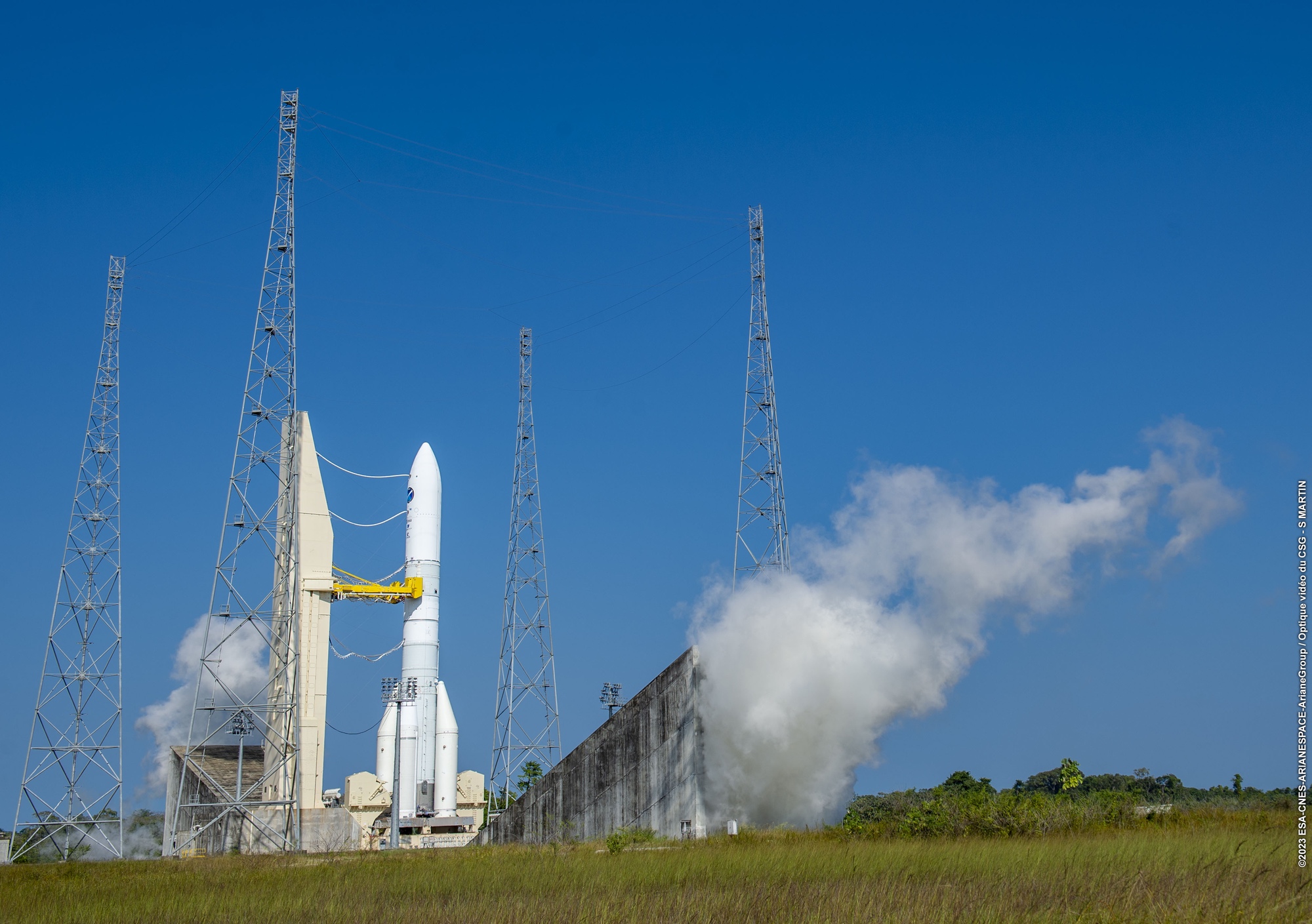WASHINGTON — The European Space Agency and ArianeGroup announced a successful hot-fire test of the core stage of the Ariane 6 rocket, the first of two such tests before ESA is ready to set a date for the rocket’s inaugural launch.
The test took place Sept. 5 on the launch pad at the spaceport in Kourou, French Guiana. A prototype of the Ariane 6 core stage was fueled with liquid hydrogen and liquid oxygen propellants and its Vulcain 2.1 engine fired for four seconds, as planned.
The test “is a major step towards qualification of Ariane 6, because we have notably validated all the operations needed to run a complete launch campaign,” said Martin Sion, chief executive of ArianeGroup, the prime contractor for Ariane 6, in a statement.
The hot-fire test was previously scheduled for July, but stopped before reaching engine ignition. ESA later said the automated countdown was aborted “due to certain measurements exceeding preset limits,” and later called off because of a lack of liquid oxygen.
“We had not enough time to do it and not enough oxygen in the tanks, so we decided to stop the chronology and to retry the complete ignition of the Vulcain during the next chronology,” said Carine Leveau, director of space transportation at the French space agency CNES, on the July attempt during a Sept. 4 ESA briefing.
The test was rescheduled for Aug. 29 but called off again because of what ESA said at the time was a “technical issue affecting the control bench” that handles propellant loading and the automated countdown. Leveau said that there was no “clear technical issue” with the control bench, but that engineers needed more time be sure everything was ready for the test.
“This completed Ariane 6 hot-fire test was essential in minimizing the potential for mishaps during the final launch sequence and ensuring its success. Step-by-step qualification of all the operations leading to the launch involves rigorously coordinated work by CNES, ArianeGroup and ESA,” said Philippe Baptiste, head of CNES, in a statement.
This short-duration test will be followed by a second, scheduled for Oct. 3, where the Vulcain 2.1 engine will fire for 470 seconds. That is intended to support final qualification of the core stage for flight.
At the Sept. 4 briefing, ESA Director General Josef Aschbacher said that after the conclusion of the long-duration test, the agency would be ready to set a target launch period for the first Ariane 6. He declined to narrow down that range of dates for the launch other than to say that, if all goes well with upcoming tests, that launch will take place “not too late” in 2024. The rocket was once scheduled to perform its first launch in 2020.
“We have a fantastic team working on this program,” said Toni Tolker-Nielsen, ESA’s director of space transportation, in an agency statement. “We can all feel it – we are taking the final steps towards entering into the Ariane 6 era.”
